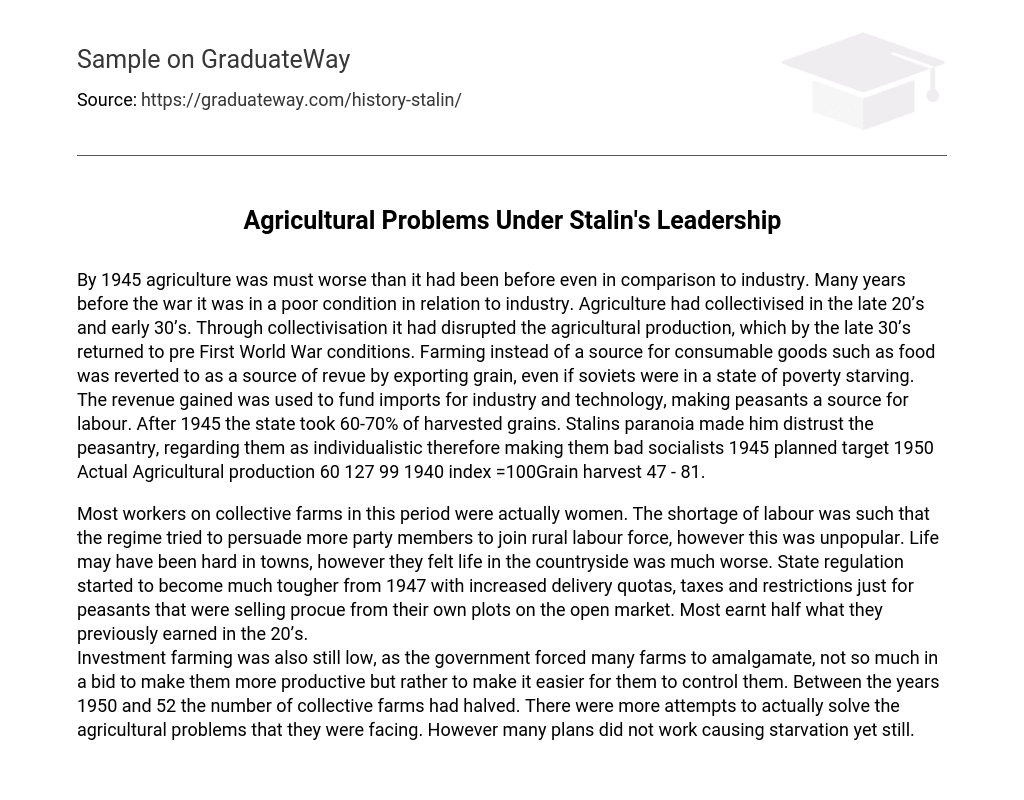By 1945 agriculture was must worse than it had been before even in comparison to industry. Many years before the war it was in a poor condition in relation to industry. Agriculture had collectivised in the late 20’s and early 30’s. Through collectivisation it had disrupted the agricultural production, which by the late 30’s returned to pre First World War conditions. Farming instead of a source for consumable goods such as food was reverted to as a source of revue by exporting grain, even if soviets were in a state of poverty starving. The revenue gained was used to fund imports for industry and technology, making peasants a source for labour. After 1945 the state took 60-70% of harvested grains. Stalins paranoia made him distrust the peasantry, regarding them as individualistic therefore making them bad socialists 1945 planned target 1950 Actual Agricultural production 60 127 99 1940 index =100Grain harvest 47 – 81.
Most workers on collective farms in this period were actually women. The shortage of labour was such that the regime tried to persuade more party members to join rural labour force, however this was unpopular. Life may have been hard in towns, however they felt life in the countryside was much worse. State regulation started to become much tougher from 1947 with increased delivery quotas, taxes and restrictions just for peasants that were selling procue from their own plots on the open market. Most earnt half what they previously earned in the 20’s.
Investment farming was also still low, as the government forced many farms to amalgamate, not so much in a bid to make them more productive but rather to make it easier for them to control them. Between the years 1950 and 52 the number of collective farms had halved. There were more attempts to actually solve the agricultural problems that they were facing. However many plans did not work causing starvation yet still.





